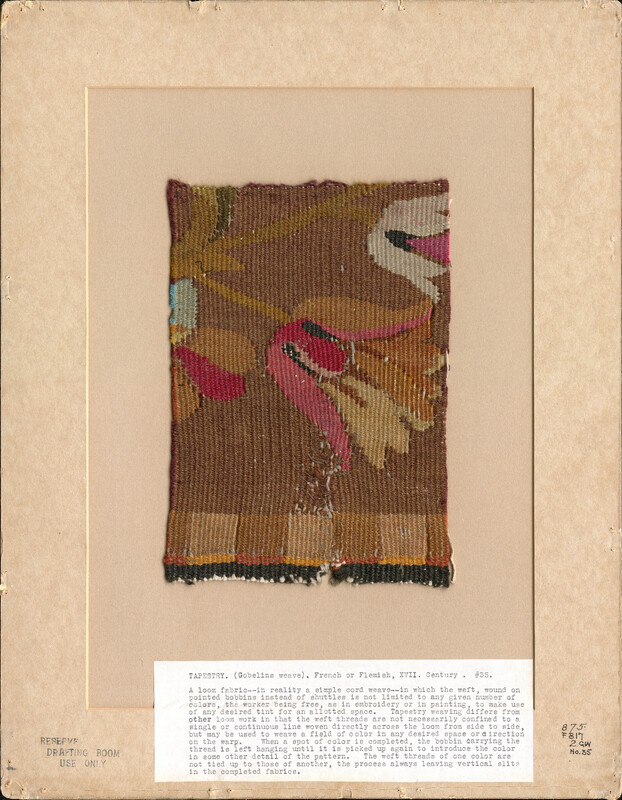French or Flemish Gobelins weave tapestry.
Item
- Title
- City
- Century
- Classification
- Building Type
- Cultural Context
- Techniques
- Description
- Source
- Rights Holder
- Access Rights
-
French or Flemish Gobelins weave tapestry.
-
France or Belgium
-
17th Century
-
Decorative Objects, Furnishing, and Visual Works
-
French or Belgian
-
Gobelins weave
-
A loom fabric--in reality a simple cord weave--in which the weft, wound on pointed bobbins instead of shuttles is not limited to any given number of colors, the worker being free, as in embroidery or in painting, to make sure of an desired tint for an allotted space. Tapestry weaving differs from other loom work in that the weft threads are not necessarily confined to a single or continuous line woven directly across the loom from side to side, but may be used to weave a field of color in any desired space or direction on the warp. When a spot of color is completed, the bobbin carrying the thread is left hanging until it is picked up again to introduce the color in some other detail of the pattern. The weft threads of one color are not tied up to those of another, the process always leaving vertical slits in the completed fabrics.
-
College of Architecture, Texas Tech University 875.F817 2.GW No.35
-
#35.
-
Texas Tech University Libraries
-
Users must request permission from the copyright holder for all use in publications, including theses and dissertations.
“French or Flemish Gobelins weave tapestry.”, Arch Design Images, accessed December 24, 2025, https://exhibits.lib.ttu.edu/s/archlib/item/40783


